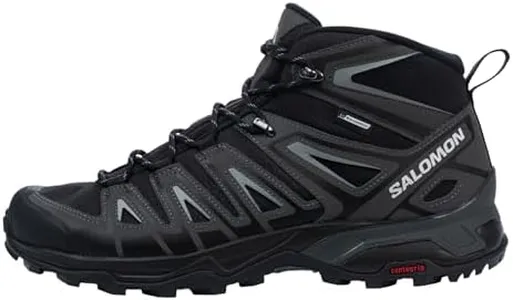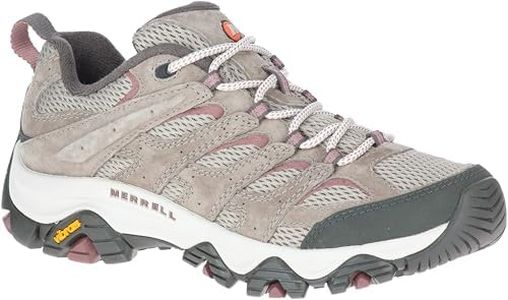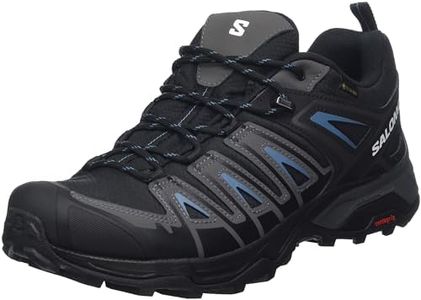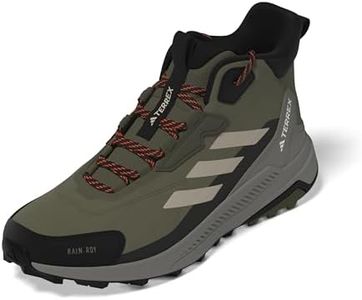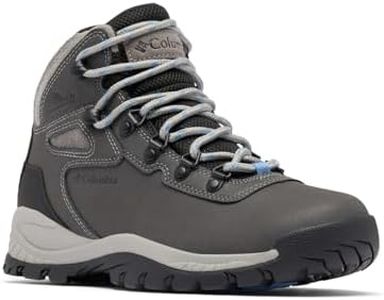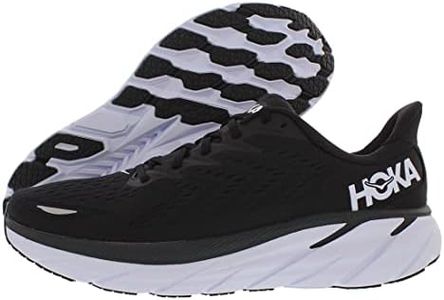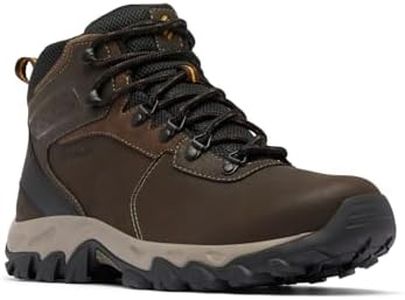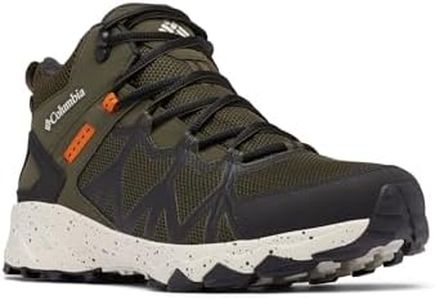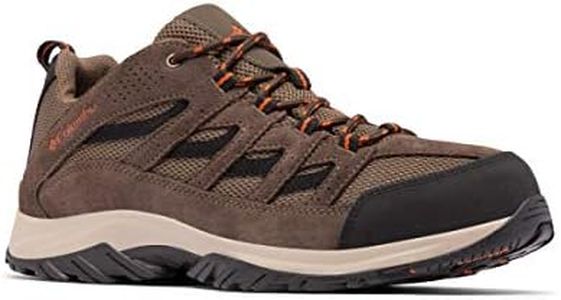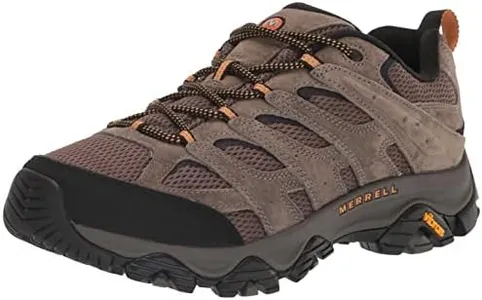We Use CookiesWe use cookies to enhance the security, performance,
functionality and for analytical and promotional activities. By continuing to browse this site you
are agreeing to our privacy policy
10 Best Lightweight Hiking Shoes
From leading brands and best sellers available on the web.Buying Guide for the Best Lightweight Hiking Shoes
Choosing the right lightweight hiking shoes can make a huge difference in your comfort, endurance, and enjoyment while out on the trail. It's important to find a pair that matches both the type of terrain you plan to cover and your personal hiking style. Some shoes offer more support, while others focus on breathability or water resistance. Understanding the most important features can help you narrow down your choices and pick shoes that not only fit well but also meet your specific needs.WeightThe weight of the shoe is crucial because lighter shoes help reduce fatigue, especially on long hikes. Generally, lightweight hiking shoes weigh less than traditional boots, making them ideal for day hikes and fast-paced trips. Lightest models focus on minimalism and speed, moderate weights provide more durability and support, while heavier shoes may offer extra protection but can slow you down. Think about the distance you'll cover and how much speed versus protection you want—lighter is better for quick, dry trails, while a bit more weight can help if you're carrying a heavier pack or need more foot support.
TractionTraction refers to how well the shoe grips the ground, which is critical for safety on uneven or slippery trails. Soles with aggressive lugs offer more grip on loose, muddy, or rocky surfaces, while flatter, less aggressive patterns work well for dry, groomed trails. If you plan to hike on varied or challenging terrain, look for shoes with deeper, multi-directional lugs. For mostly flat, easy paths, you can choose a smoother sole. Your destination and terrain should guide you to the right level of grip.
Support and CushioningSupport and cushioning affect comfort and reduce fatigue, especially over longer hikes or rough terrain. Shoes with robust midsoles and more cushioning help absorb shock and provide stability, which is good for rough, uneven surfaces or if you have sensitive feet. Minimal cushioning increases ground feel and flexibility, better suited for experienced hikers or short, flat trails. Consider the type of hikes you’ll do, your foot health, and personal comfort preferences—go for more support if you value comfort and plan longer treks, less if you want to feel fast and agile.
Breathability and WaterproofingBreathability means how well a shoe lets your feet stay cool and dry, while waterproofing keeps your feet protected from rain and puddles. Mesh uppers are more breathable and ideal for dry, hot climates, but offer little protection against water. Waterproof or water-resistant shoes are better for wet or unpredictable weather, but may feel warmer and less airy. Think about your usual hiking weather—choose breathability for hot, dry hikes, waterproofing for wet conditions, and a middle ground for mixed environments.
Fit and SizingFit and sizing are all about how the shoe feels on your foot—snug but not tight, with room for toes to wiggle. Too tight and you'll get blisters, too loose and you risk slipping or tripping. Try shoes on with your hiking socks, and make sure there’s a thumbnail’s length at the toe. Remember that feet can swell on long hikes, so a little extra room is helpful. Choose the fit that feels secure and comfortable for your foot shape—many brands offer wider or narrower versions if you need them.
DurabilityDurability is how well the shoes hold up over time, especially on rough terrain. Materials like synthetic leather or reinforced fabrics last longer and offer more protection, while very light mesh shoes may wear out faster but feel more comfortable for quick hikes. If you hike often or on rocky, abrasive paths, choose more durable construction; if you mostly walk easy trails occasionally, lighter options can work for you.
